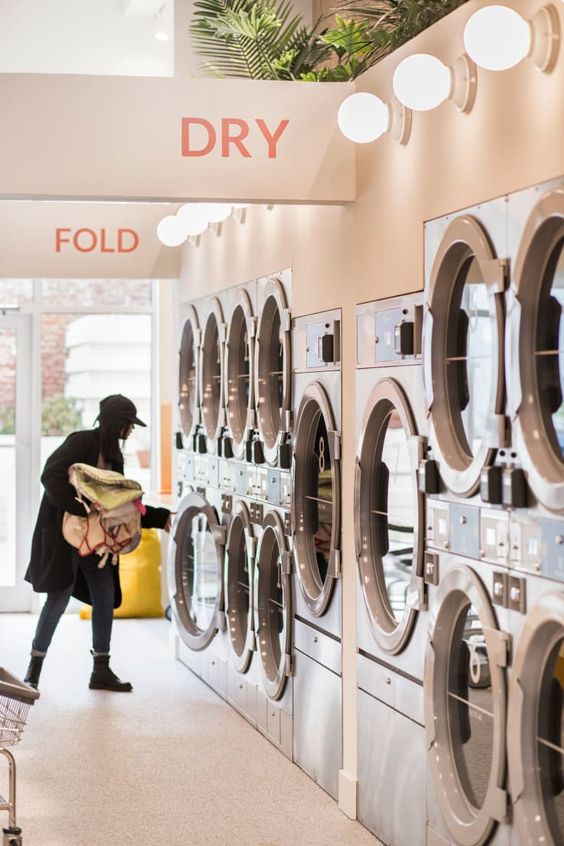A poorly managed laundry room doesn’t just waste time—it eats into budgets, staff morale, and customer satisfaction. Whether you’re running a high-traffic laundromat or managing on-premise laundry in housing or healthcare, your laundry room should be more than just a place to wash clothes. It should be a smooth-running operation that adds value instead of stress.
So, what does effective laundry room management look like today? It’s less about doing more, and more about doing things right, consistently. From scheduling to spatial layout and operator efficiency, this guide lays out the systems that keep laundry rooms operating smoothly, especially across multiple locations.
Why Laundry Room Management Matters More Than Ever
The laundry room often becomes an overlooked utility space—until something goes wrong. Machines break down. Linen stock goes missing. Staff burn hours chasing dirty uniforms.
But a well-run laundry room delivers:
- Shorter turnaround times
- Fewer machine failures
- Cleaner results
- Predictable service schedules
- Happier tenants, guests or staff
In high-volume environments—like student housing, gyms, or healthcare—these gains are measurable. You’re not just managing machines; you’re managing people, movement, and daily habits.
Set Up for Success: Space, Flow and Access
Good management starts with a smart setup. If your laundry room feels cramped or chaotic, efficiency takes a hit before a single cycle even starts.
Ask yourself:
- Are clean and dirty items stored separately?
- Can users move between machines easily?
- Are vents, hoses and lint traps accessible?
- Is detergent easy to access and restock?
Even simple adjustments—like adding folding tables, wall-mounted baskets, or clearer signage—can reduce idle time and prevent cross-contamination.
If you’re managing multiple locations, consistency in layout helps too. Staff move faster when every laundry room works the same way.
→ What are the proper requirements for handling laundry?
Timing is Everything: Optimise Pickups and Drop-offs
One of the most common failures in shared laundry operations is unpredictable servicing. If linen piles up or machines sit idle waiting for pickup, it slows everything down.
A structured laundry route system can prevent this. Think of it as a scheduled circuit—laundry moves through your network in cycles, not chaos.
This approach works best when:
- Routes are fixed and predictable
- Machines are tagged with their load frequency
- Operators check for missed cycles or problem machines
- Delays trigger alerts or backup support
Routine is your ally here. Regular pick-up windows and daily resets create momentum.
→ What are the proper requirements for handling laundry?
Who’s Responsible? Clear Roles Keep Things Moving
A laundry room without accountability quickly becomes someone else’s problem. That’s why assigning clear roles—on-site and off-site—matters.
For example:
- On-site staff reset and tidy up the room once a day.
- A route operator collects, drops off, and checks machine status.
- A manager oversees stock levels and performance KPIs.
This three-part structure ensures every task is covered. No one’s guessing who should clear the lint trap or report a leak.
Pro tip: A laminated checklist next to the entry door helps keep things visible and consistent. Include items like:
- Empty dryer filters
- Clean detergent spills
- Remove stray laundry
- Check machine availability
→ What are the proper requirements for handling laundry?
Go Beyond Gut Feel: Use Data to Drive Decisions
If you’re relying on visual checks or user complaints to manage your laundry room, you’re missing out on smarter ways to stay ahead.
Start with:
- Machine counters (to track cycles per day)
- Timed logs of wash/dry usage
- A simple feedback system (QR code + form)
Over time, this data shows trends. You’ll know which machines are underused, when peak hours hit, and where delays occur. That insight feeds into smarter staffing, fewer outages, and better inventory planning.
Some facilities even schedule maintenance based on cycles, not calendar dates—cutting repair costs and machine downtime. For example, dryers with auto-logged cycles can trigger lint duct cleaning every 300 loads, instead of guessing based on time.
For more detail, here’s a breakdown on how cycle-based maintenance improves uptime.
Scaling Up Without Losing Control
Managing a single laundry room is hard enough. Multiply that across ten or more sites, and the risks compound: miscommunication, skipped services, and breakdowns.
This is where standardised management systems—paired with professional route operators—change the game. Instead of hiring extra staff or checking each room manually, you create a loop:
- Standard layout across sites
- Shared checklist for room resets
- One route operator per group of locations
- Monthly report summarising issues and usage
This method keeps costs flat while scaling service. Operators handle logistics; your team stays focused on core responsibilities.
Final Thoughts: Clean Systems, Not Just Clean Laundry
Laundry room management doesn’t need to be complex. But it does need structure. Whether you’re running a commercial facility or a shared-use building, the goal is the same: predictability, hygiene, and time efficiency.
Build your system around space, schedule, and service. Assign responsibilities clearly. And track what’s actually happening on the ground—not just what should be happening.
If your laundry room consistently runs behind or burns staff hours, the fix isn’t another machine—it’s a better way to manage what you’ve already got.

